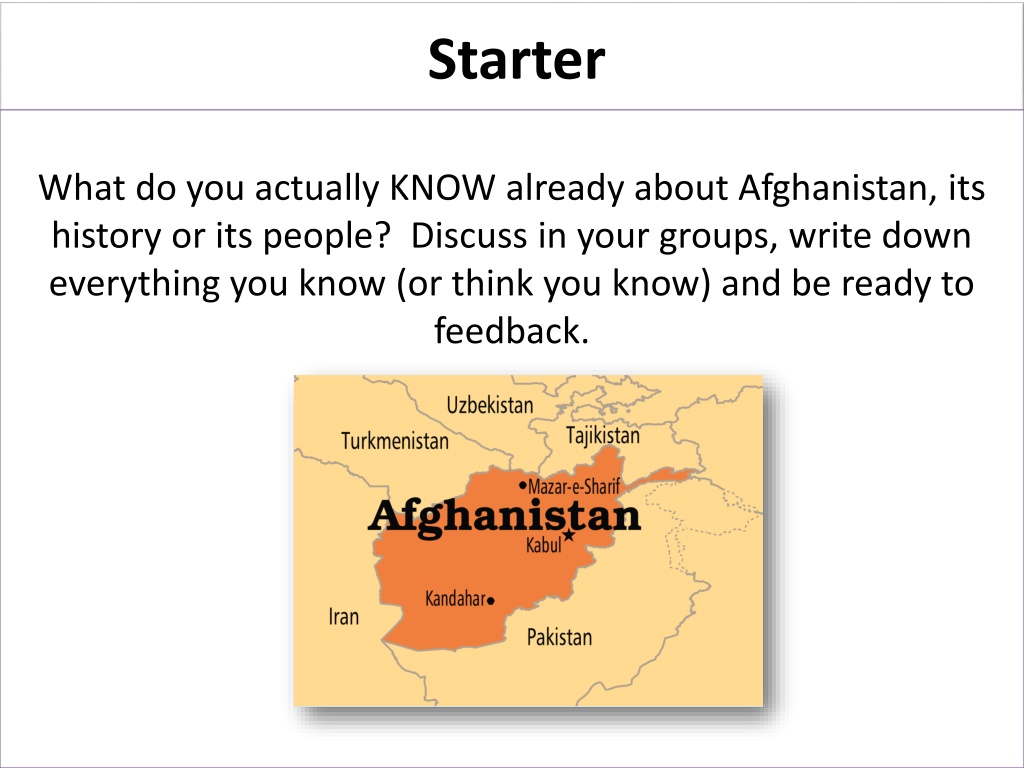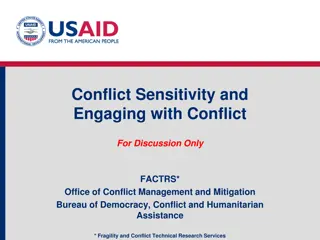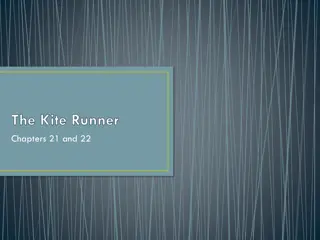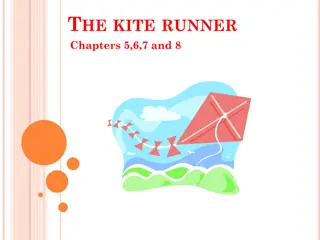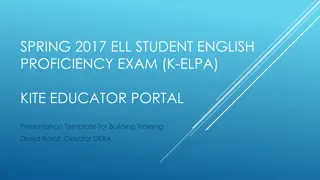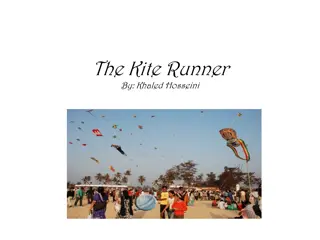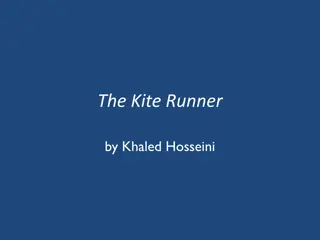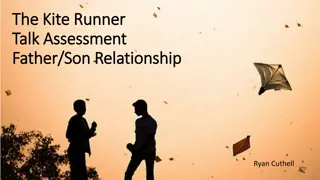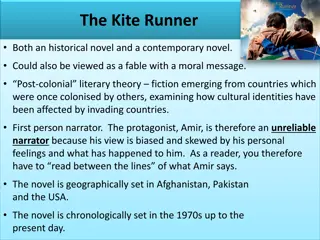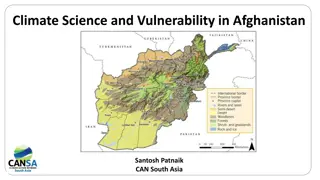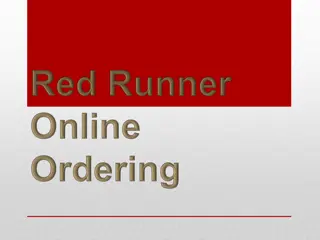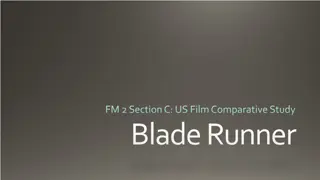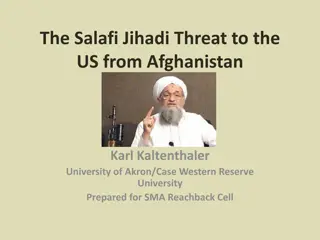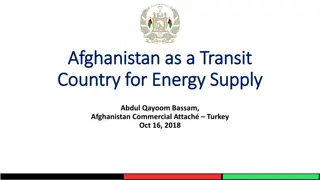Exploring Afghanistan: History, People, and Conflict in The Kite Runner
Uncover the rich tapestry of Afghanistan's history, people, and conflicts as depicted in Khaled Hosseini's novel, "The Kite Runner." Delve into the author's background, the novel's themes, and the importance of understanding the geographical, ethnic, and religious diversity of the region. Research key aspects like Afghanistan's geography, population, languages, ethnic groups, and historical conflicts to deepen your comprehension of the novel's setting and influences.
Download Presentation

Please find below an Image/Link to download the presentation.
The content on the website is provided AS IS for your information and personal use only. It may not be sold, licensed, or shared on other websites without obtaining consent from the author. Download presentation by click this link. If you encounter any issues during the download, it is possible that the publisher has removed the file from their server.
E N D
Presentation Transcript
Starter What do you actually KNOW already about Afghanistan, its history or its people? Discuss in your groups, write down everything you know (or think you know) and be ready to feedback.
Learning Intentions Understand the context and background to the novel Engage with key themes and symbolism in the novel Engage with Chapter One Social Skills: Listening Effectively
The Kite Runner By Khaled Hosseini
Khaled Hosseini Born in Kabul, Afghanistan in 1965. Moved to Paris in 1976 due to his father s diplomatic work. Family granted asylum in USA in 1980 due to the communist overthrow of the Afghan government. Studied biology, graduated and worked as a doctor until 2004. In 2001, while still a practising doctor, started writing The Kite Runner. The Kite Runner was his first novel, published in 2003. It went on to be a huge success: translated into 42 languages, published in 48 countries, made into a film and winning awards. It remained on the New York Times best seller list for over 2 years.
The Kite Runner To fully appreciate and understand this text it s important to have a basic understanding of: the geography and history of the area where the text is set ethnic groups and religious diversity conflict.
Research Afghanistan, completing at least one side of A4 notes, following this guide: Geography: Where is Afghanistan? What is the population of Afghanistan? What are the official languages of Afghanistan? History: Examine and report on the general history of Afghanistan. Then specifically focus on the 20th and 21st Centuries. Ethnic groups and religious diversity: How many major ethnic groups are there in Afghanistan? What are the dominant religious groups? What are the key differences between them? What sect do the majority of Muslims belong to in Afghanistan? Has this created any differences between groups? Why are the Pashtuns so influential in Afghanistan? Conflict: You need to research the troubled history of Afghanistan focusing on the novel s time setting and influences in the novel (1970s to the year 2002 including the Soviet invasion and the Taliban seizing control). What conflicts have the people of Afghanistan faced since the 1970s? Explain what happened in Kabul in the early 1990s, before the Taliban took control, and how this affected the population.
The Kite Runner Both an historical novel and a contemporary novel. Could also be viewed as a fable with a moral message. Post-colonial literary theory fiction emerging from countries which were once colonised by others, examining how cultural identities have been affected by invading countries. First person narrator. The protagonist, Amir, is therefore an unreliable narrator because his view is biased and skewed by his personal feelings and what has happened to him. As a reader, you therefore have to read between the lines of what Amir says. http://1389blog.com/pix/msword-smiley-writing.gif The novel is geographically set in Afghanistan, Pakistan and the USA. The novel is chronologically set in the 1970s up to the present day.
Themes Fathers / Sons Identity Storytelling History Power Friendship Guilt Forgiveness / Redemption Destiny Religion / Ethnicity Betrayal Evil
Inverkeithing High School Badge Symbolism The kite Hassan s hare-lip The slingshot The lamb Rape The pomegranate tree Fruit Tree carving Sohrab s silence
Chapter 1 Very short. Juxtaposes Amir s memories of Afghanistan with his current life in the USA. Although we start in 2001, the story is then retold in a series of extended flashbacks. The narrator therefore ALREADY KNOWS how his story is going to end this fact must be taken into consideration as it colours the rest of his narrative. This techniques of flashbacks allows the narrator to foreshadow events which have not yet occurred, building dramatic tension. Uses pathetic fallacy (where the weather is used to reflect the character s feelings) a frigid overcast day reflecting the oppressive and chilling emotions he experienced.
Chapter 1 Key Quotes I became what I am today at the age of twelve, on a frigid overcast day crouching behind a crumbling mud wall, peeking into the alley near the frozen creek...I have been peeking into that deserted alley for the last twenty-six years I ve learned about how you can bury it [the past] the past claws its way out It was my past of unatoned sins a pair of kites...soaring in the sky. They danced high above the trees...floating side by side like a pair of eyes For you, a thousand times over There is a way to be good again I thought of the life I had lived until the winter of 1975 came along and changed everything. And made me what I am today.
Chapters 1 and 2 1. 2. 3. What is the significance of the past for the narrator? What physical feature marks out Hassan? Is it significant that Rahim Khan is mentioned 3 times but Baba only once and even then only after Rahim is mentioned? Compare the opening and closing lines of the chapter. How does the narrator introduce Hassan? Compare the second paragraph on p.5 (bottom of p.4) and the fourth paragraph on p.9 (bottom of p.9). What do these paragraphs suggest about the relationship each boy has with their father? The boys lives run parallel to each other, how are they similar and how different? The themes of childhood and friendship are important in this chapter. Can you identify another theme the author wants us to notice? What is the effect of only finding out the narrator s name at the end of this chapter? What is the significance of the revelation? 4. 5. 6. 7. 8. 9.
Learning Intentions: Engage with questions on Chapters 1 and 2 Examine and analyse Chapter 2 Understand how key themes are starting to emerge Social Skills: Ensuring everyone contributes; effective discussion.
Homework - Reminder Due next week: Research Afghanistan, completing at least one side of typed A4 notes, following the handout guide.
Chapter 2 Amir discusses the fact Hassan is from a lower status ethnic group, the Hazara; Hazaras have been persecuted by the Pashtuns (Amir s ethnicity) for many years. He also remembers that Hassan would take the blame for Amir, whenever they got into trouble. Imagery to describe Hassan and his ethnicity: a face like a Chinese doll chiseled from hardwood...eyes that looked, depending on the light, gold, green, even sapphire Amir clearly loves Hassan. Baba is a powerful man, but often dismisses his son, read one of those books of yours . He views Amir s intellectual abilities as being a sign of weakness. There is a lack of women Amir s mother died, Hassan s left.
Chapter 2 Working in groups, you are going to collate information from Chapter 2 under the following headings: The character of Hassan Friendship Father / son relationships Absent mothers Rich vs Poor Ethnic conflict No.1s you are the scribe No.2s you are the spokesperson and will feedback to the class, but will also help no. 3 and 4. No.3s and 4s you need to find relevant quotes You ALL need to decide on relevant information and ideas and explain how they are important to the central themes of the novel.
Learning Intentions: Understand the key issues of Chapters 3, 4, 5 and 6 Examine the pivotal Chapter 7 in detail Hot-seat Amir to find out what was going through his mind at this key moment
Chapter 3 The idea that Baba wrestled a bear creates an unrealistic role model for Amir how can he ever live up to this? Baba teaches Amir his own interpretations of religious scripture that the only sin is theft. Amir believes he stole the life of his mother during child-birth and that is why his father hates him. Is this fair? The mythological idea of Baba is furthered by his building of the orphanage. However image can be deceiving Baba is possibly just trying to alleviate his guilt about Hassan. It is more evidence however that Amir will always struggle to live up to the figure of his father, who he has placed firmly on a pedestal. But shouldn t we always respect our parents? Amir overhears his father s disdain for him: he never fights back...there is something missing in that boy . How would he feel? Foreshadowing future events, Amir deals with this by being cruel to Hassan and taking out his frustrations on his friend.
Chapter 4 We are given more background information about Baba and Ali s history. The divisions are explored again: Baba and Amir are Sunni Pashtuns and Ali and Hassan are Shi a Hazaras. What other similar conflicts can you think of, either in history or in our present day? Amir and Hassan s favourite place is an old cemetery, underneath a pomegranate tree. The pomegranate is symbolic of life; according to the Koran, pomegranates are one of the fruits which Muslims will find in the gardens of paradise they are supposed to be a cure for envy and hatred. Where is the irony in that? We learn of the their love of stories, especially Rostam and Sohrab. The ability to read is a powerful tool Amir s mother used to be a teacher, using her skills to help others. It is significant that Amir chooses NOT to teach Hassan to read, therefore retaining his power and superiority over Hassan. He goes a step further teaching him the wrong meanings for words and teasing him. Why does he do this? Amir starts writing stories his father is not interested, but Rahim Khan encourages him. When Hassan points out a possible hole in the story, Amir becomes angry why?
Chapter 5 Setting is important and in this chapter, we are given the hints of conflict and terror. Gunfire is heard and there is a coup which overthrows the king of Afghanistan. It foreshadows what is to come. Amir and Hassan are attacked by Assef and his gang. Hassan scares the bullies off with his slingshot and Assef promises revenge. This opens up the gap between Amir and Hassan as Amir thinks he s not my friend!...He s my servant! , foreshadowing how he will easily discard his friend. Can you think of any other instances where a friend is easily cast aside, to save one s own skin? Baba arranges for Hassan s cleft lip to be surgically corrected a symbol of healing and restitution. Baba is trying to salve his own conscience. However all it does is create more jealousy from Amir towards Hassan. Would things have been different if Amir had known Hassan was his brother at this point? Examine Assef s love of Hitler and the way that the Pashtuns treat the Hazaras what comparisons can be made?
Who is the worse bully? Amir Assef
Chapter 6 The boys prepare for the winter kite tournament. Baba buys new kites for both boys, again making Amir jealous. The kite symbolises freedom and independence and is symbolic of Afghan spirit. It can also be seen as a metaphor for childhood. Amir tests Hassan s loyalty by asking him if he would eat dirt if commanded to do so more evidence of his jealousy and cruelty. Hassan says that he would, but challenges Amir over whether he would ever actually ask him to do so. Amir backs down, illustrating his unease about being socially superior to Hassan he doesn t know how to handle it. Hassan s challenge shows that he is fully aware of the balance of power between them. This is reinforced when Hassan allows Amir to win at cards. Is Hassan therefore to blame in reinforcing their social differences? Is he weak or strong to act in such a way? Amir is desperate to win the tournament, in order to obtain his father s approval, love and respect. Why would his father be proud?
Chapter 7 This is a key chapter of the novel. It is a major turning point in the story and the rape of Hassan is the event that Amir has been foreshadowing in earlier chapters and one which he will continually refer back to in future chapters. It completely alters the lives of both Hassan and Amir. What would have happened if Amir HAD stepped in? (We will look at this in detail later!) Re-read the opening first section of Chapter 7 Hassan s dream. In pairs, discuss: Is it a positive or negative omen for the upcoming tournament? Why has Hosseini included it at this point?
Chapter 7 Let s look at important quotes leading up to the rape scene. We are then given the juxtaposition of ideas - the happiness of the tournament victory and the horror of the rape. This contrast is shown by setting the lightness of the day becomes the darkness of the alley. Let s read from p.67, I heard the voices again, louder this time.... In groups of 3 or 4, discuss how Hosseini changes his style of writing here. What is he trying to imply? Think about the emotions of Amir. Do the events in the alley make Amir the person he becomes? Or was his fate already sealed? Whose fault is it, ultimately? Discuss how Hassan, Baba, Amir and Assef could be apportioned blame and debate their responsibilities. Be ready to feedback.
Homework Complete your chapter questions up to Chapter 6 Due Monday 5th October Complete the handout on Chapter 9 Due Friday 9th October
Chapter 7 In your groups, discuss these questions and take notes for your answers: 1. The sky is described as a blameless blue (p.57). What significance does this take on later in the chapter? 2. Hassan tells Amir You won, Amir agha! You won! What does Amir reply and why is this unexpected? 3. Why does Hosseini break the chapter with the description of a memory and a dream? 4. What is it called when two contrasting things are put together to encourage the reader to think? How is the technique used in this chapter? 5. How do Wali and Kamal react to the rape? Why is what Wali says important to our understanding of Assef? 6. Why is the description of the Eid sacrifice included here? 7. How much do you blame the hero of this chapter for the way he acts when his friend is raped? Are there any mitigating factors?
Hot Seat Working in pairs, one of you take on the role of the child Amir (not the adult Amir narrator) just after the rape of Hassan. The other person take on the role of questioner. Try and find out exactly what Amir was thinking at this moment. Why did he abandon his friend? Did he regret his actions?
Starter If you had to think of just one word to describe the following characters, what would that one word be? Amir Hassan Baba Ali Assef Rahim Khan Be ready to feedback your answer
Chapter 8 In your groups, discuss and compile notes on the use of SYMBOLISM in Chapter 8. You should consider: The pomegranate tree Amir s party Assef s gift for Amir What do these symbols represent? What is Hosseini using them to show us? LI: Engage with further chapters in the book / Analyse key scenes, looking at literary techniques and themes
Chapter 9 Amir can no longer bear to look at Hassan and be reminded of his guilt. He frames Hassan to look like a thief. Consider the use of pathetic fallacy in the last section of this chapter (from In Kabul, it rarely rained in the summer.....). At the end of the chapter, Amir has yet another chance to make amends one of many opportunities but he fails yet again to act. Task: Consider how Hosseini creates a sense of Amir s guilt in Chapter 9. Write down your ideas in your notebook. Fill in the table on the sheet to develop your response you may change ideas where necessary LI: Engage with further chapters in the book / Analyse key scenes, looking at literary techniques and themes
Homework Read up to Chapter 17 (page 198) Complete the handout on Chapter 9 (available on the class blog)
General Feedback Based on your critical essays on My Rival s House and View of Scotland/Love Poem Introductions and conclusions are important leave an impression. Show off. Summarise your points. Be sophisticated. PEE Structure topic sentences. Analysis don t make generalisations. Be specific. What are the connotations of the language, and what is the writer using them to try and say. Be clear about the point your essay is trying to make. Refer to the question throughout. Technical accuracy is not optional spelling, punctuation, phrasing, etc. are essential. Ignore these & your essay will fail automatically. Self-editing correct as you go. The marker won t. Refer to the writer by their surname after the introduction. Formal language no abbreviations (didn t, wouldn t), no figures of speech (this drums in). Evaluative language this is effective because; Lochhead successfully uses, etc.
Critical Essay Task Choose from a novel or short story an incident in which a character makes a decision which you consider unexpected or unwise or unworthy. Explain the circumstances surrounding the decision and discuss its importance to your understanding of character and them in the text as a whole.
Things to have completed by today: Read up to Chapter 17 (page 198) Complete the hand-out on Chapter 9
Learning Intentions: Understand how the characters are portrayed in the novel Apply that knowledge to finding evidence to back up our thoughts on each character
Character Analysis Number 1s and 2s Hassan Number 3s and 4s Amir On your paper write your character s name at the top, then create an outline. On the INSIDE of the body, write all their personality traits and how you feel about them. On the OUTSIDE, draw some speech bubbles to illustrate some key quotes that they have said / have been said about them. EVERYBODY must take part and make contributions. You will have ten minutes and then we will swap groups. LI: Understand how the characters are first presented / Find evidence to back up our thoughts on each character
Amir But he s not my friend! He s my servant! ...he never fights back...there is something missing in that boy Desperate for his father s approval Avoids a fight http://digitalminimalism.com/wp-content/uploads/2012/09/10-minutes.jpg LI: Understand how the characters are first presented / Find evidence to back up our thoughts on each character
Character Analysis Now swap characters. Have a look at what has been written and see what you can add. Remember EVERYONE must take part and make additions to the sheet. LI: Understand how the characters are first presented / Find evidence to back up our thoughts on each character
Character Analysis Now, discuss each character in your groups, adding points of analysis to your sheets as you go. The aim to have BOTH sheets filled with quotes and detail about Amir and Hassan. YOU HAVE TEN MINUTES
Recap Discussion Discuss the novel from Chapter 9 16, where you should have read up to. In what way does Chapter 9 act as a turning point in the novel? How does it impact our feelings towards Amir? How does Hosseini create tension in the following chapters as unrest in Afghanistan begins to escalate? How does Amir and Baba s relationship change during these chapters? What moments define these changes? When Amir returns to Afghanistan Baba s orphanage is destroyed what is this symbolic of? What impact does the change of narrator in Chapter 16 have on the novel? In what way his Rahim Khan a different narrator to Amir? YOU HAVE FIVE MINUTES
Reflection Using the reflection sheets, choose one of the statements and decide how you would finish the sentence. Be ready to feedback.
Task Read chapters 17-21. Use your notes as a guide, answer the questions pertaining to these chapters in your notebooks. This is individual work you don t need to talk, just focus.
Learning Intentions: We will: Engage with further chapters in the book Analyse key scenes, looking at literary techniques and themes
Chapter 8 Amir feels guilty for not helping Hassan, but he won t take responsibility for it or admit to what happened. Amir gets travel sick but is this all it is? He travels alone with his father, without Hassan. I finally had what I d wanted all those years. Except now that I had it, I felt as empty as this unkempt pool I was dangling my legs into. What literary technique is used here? I watched Hassan get raped, I said to no one. Baba stirred in his sleep...part of me was hoping someone would wake up and hear, so I wouldn t have to live with this lie anymore. But no one woke up and in the silence that followed, I understood the nature of my new curse: I was going to get away with it. Your thoughts? I thought about Hassan s dream...There is no monster, he d said...except he d been wrong about that. There was a monster...I was that monster. Hassan tries to become friends again, but Amir rejects him. He tries to get Baba to dismiss Ali and Hassan, but this infuriates Baba. LI: Engage with further chapters in the book / Analyse key scenes, looking at literary techniques and themes
Chapter 8 Let s read Page 86. Your thoughts? Symbolic and ironic used to be their safehaven; it no longer is, because Amir is bringing his guilt with him. Pomegranates used to be a symbol of their bond (remember a cure for envy and hatred). Now they are symbolic of the breaking of their bond. Hassan hits himself with the final pomegranate by once more accepting the situation, just as he did with the rape the sacrificial lamb. However he also refuses to allow Amir to assuage his guilt by fighting back. He might be socially inferior to Amir, but he is turning the other cheek and taking the moral high ground. At Amir s birthday party, Assef continues to show his horrific nature his present is a biography of Hitler. What does this symbolise? This is symbolic the passing of the gift between them illustrates their joint guilt in the act against Hassan. The chapter concludes on Assef continuing to torment Hassan, Hassan having to take it and Amir refusing to step in and help. Their roles are reinforced. LI: Engage with further chapters in the book / Analyse key scenes, looking at literary techniques and themes
Chapter 9 Amir can no longer bear to look at Hassan and be reminded of his guilt. He frames Hassan to look like a thief. Read from They d both been crying......up to....We are leaving, Agha sahib . Analyse what is being said and pick out relevant quotes. Be ready to feedback. Find an example of pathetic fallacy in the last section of this chapter (from In Kabul, it rarely rained in the summer.....). At the end of the chapter, Amir has yet another chance to make amends one of many opportunities but he fails yet again to act. Can you name all the opportunities he had to act the right way? LI: Engage with further chapters in the book / Analyse key scenes, looking at literary techniques and themes
Chapter 10 - 11 5 years later. They flee Afghanistan after the Russians invade. Weak Son v. Strong Father Amir gets travel sick again; Baba stops the rape of a woman. This act contrasts starkly with Amir failing to stop Hassan s rape. Kamal former cohort of Assef has apparently suffered the same fate as Hassan. Another reminder for Amir his story is almost identical. Yet Kamal dies is this maybe symbolic? Can Amir leave behind his guilt, as he starts his new life? 1980s living in America. Baba is now a lower-class citizen, but still commands respect amongst the Afghans. He refuses to learn English and struggles to fit in; ironically it is Amir who fits in better and becomes a success. For me, America was a place to bury my memories. For Baba, a place to mourn his. Amir describes America as; someplace with no ghosts, no memories and no sins . What literary technique is this? Baba tries to persuade Amir away from creative writing... But I would stand my ground, I decided. I didn t want to sacrifice for Baba anymore. The last time I had done that, I had damned myself . A crucial turning point. LI: Engage with further chapters in the book / Analyse key scenes, looking at literary techniques and themes
Chapter 11 Analyse Amir meeting Soraya (p. 130, from Padar Jan, you forgot your tea....until.... Flew away ). What literary techniques can you find? Is this what love at first sight feels like?! LI: Engage with further chapters in the book / Analyse key scenes, looking at literary techniques and themes
Chapter 12 Baba falls ill with lung cancer and refuses treatment. Amir falls in love with Soraya and asks for his father s help in asking for her hand in marriage such respect is very important to Afghan families. Soraya feels she cannot commit to Amir until she admits her guilty secret that she ran off with another man when she was younger You need to know. I don t want us to start with secrets . Amir accepts her regardless. What is the irony that is occurring here? Soraya admits that she longs to be a teacher because she wants to do something worthwhile. What is the irony here? I thought of how I had used my literacy to ridicule Hassan. How I had teased him about big words he didn t know. LI: Engage with further chapters in the book / Analyse key scenes, looking at literary techniques and themes
Chapter 13 They marry and Soraya helps to care for Baba. Amir is touched to learn that she has been sharing his stories with Baba acceptance at last. Baba dies. I realized how much of who I was, what I was, had been defined by Baba and the marks he had left on people s lives. My whoel life, I had been Baba s son . Now he was gone. Baba couldn t show me the way anymore; I d have to find it on my own. The thought of it terrified me. Amir has his first novel published. Soraya and Amir try for a family. What sort of a father would I made, I wondered. I wanted to be just like Baba and I wanted to be nothing like him. What does he mean by this? They find they are unable to have children. LI: Engage with further chapters in the book / Analyse key scenes, looking at literary techniques and themes
